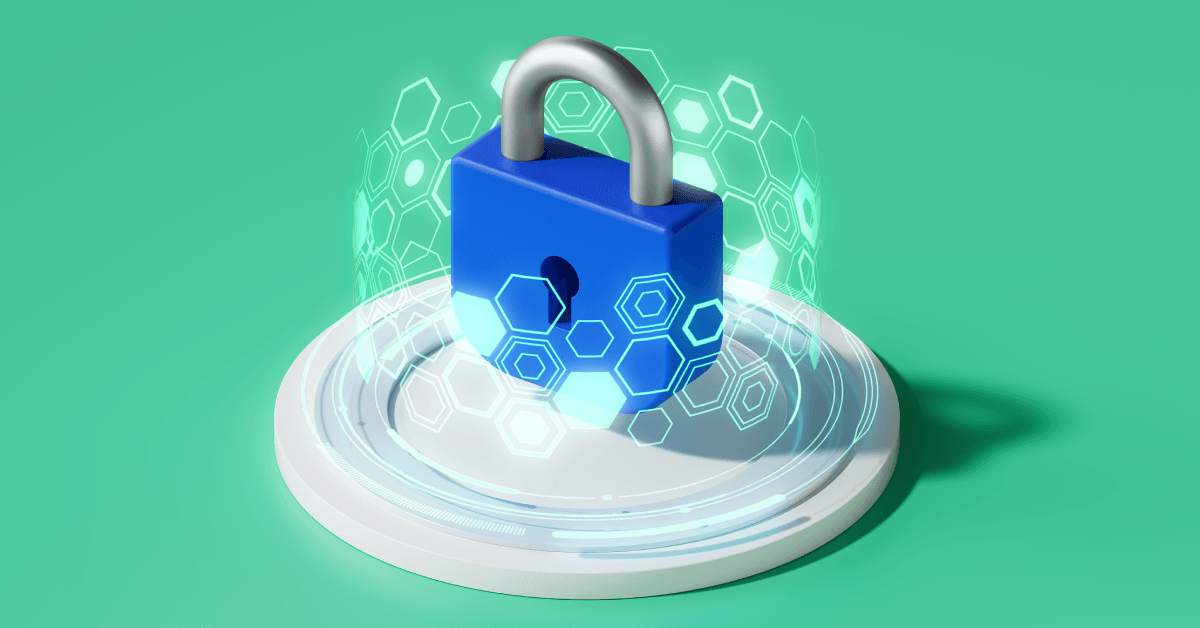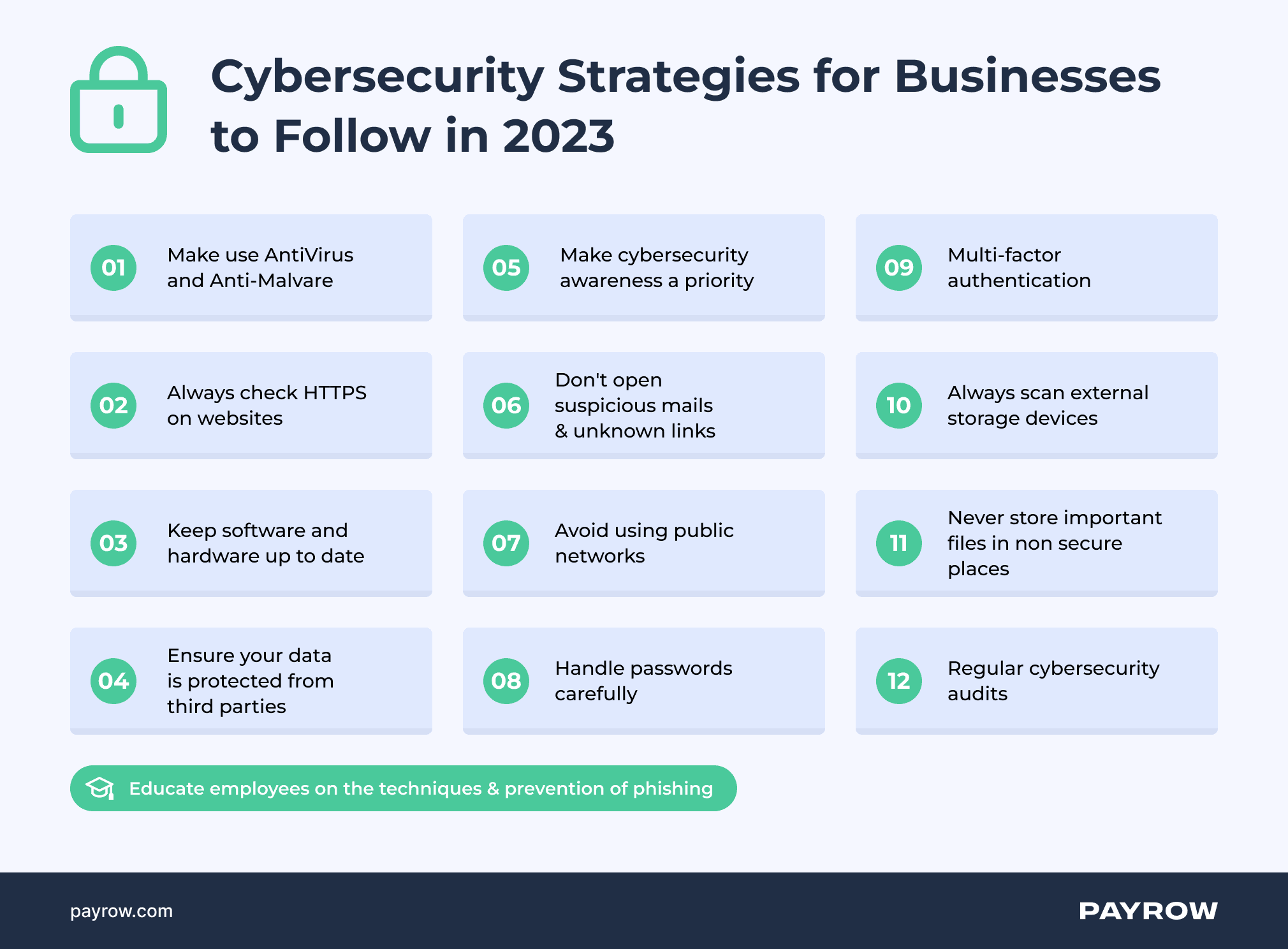• 4 MIN READ
Cybersecurity in 2023: How to Protect Your Business
November 21, 2022

The digitalization of the modern world and the need to receive more and more information from internet resources increases the vulnerability of personal data. According to embroker, cybercrime, which includes data theft, hacking, and destruction, has increased by 600% as a result of the pandemic.
The past couple of years has brought about many events that have become a reason for the formation of such a trend as a forced transition to real cybersecurity. Businesses, application and website developers, and even government agencies need additional protection against attacks and accidental malware installation. Today, a business not only includes the principles of information security in its strategy but also improves the existing systems responsible for protection.
Cybersecurity is one of the most important criteria for protecting your business and data.
If you want to stay safe, don't miss the opportunity to get acquainted with the top cybersecurity recommendations that you need to follow in 2023.

1. Implement a Cybersecurity Training Program
Most cyberattacks occur via a malicious link in an email, so employees are the first line of business defense against cyberattacks. The practice of stealing data or gaining access to important information in this way is called phishing. This is most often observed in small businesses. In large companies, some departments deal exclusively with security or training departments that develop employee cybersecurity training programs.
Training workers on what to pay attention to and showing them the importance of protecting the business significantly reduces the likelihood of a cyber-attack. Ideally, there should be a certified cybersecurity training plan for new employees and a regularly updated annual training plan for all employees of the enterprise.
What to include in the training program:
- Remind employees to be overly cautious;
- Help identify potential cyber threats;
- Teach employees what to do if someone receives or identifies a threat;
- Show them how to report anything that causes alarm.
If you work with a security service provider, it can help if you create an individual training program specifically for your business and your team. You can also find free training through technology companies and government agencies.
The common recommendations include discussions of cybersecurity topics with the company’s employees, for example, recognition of phishing emails, safe browsing practices, prevention of malicious downloads, creation of strong passwords, and protection of personal information.
2. Audit Your Business's Cybersecurity Plans
Conducting an annual security audit allows you to get a general idea of possible problems in the company's network and other security gaps or risks. The audit helps you review and evaluate current documents, processes, and security plans in multiple business areas, including data and operational security, network and system security, and must-have physical security of the employees.
A security audit is usually conducted by a security service provider using modern software and special tools. It will not only give an understanding of what needs to be eliminated, but it will also help to develop a strategy to recover in the case of an attack.
3. Perform Software Updates
Security updates need to be regular because they help to get rid of errors that occur in the code. Bug fixes and software updates are necessary because they affect the degree of security of the company's data. It is important to follow new trends in the field of operating systems and software to build a perfect security system.
The most frequent targets among attackers are loopholes in an outdated security system. The obsolescence of protection mechanisms, which occurs over time in any case, causes vulnerabilities in software, servers, and in IT infrastructure in general. Software engineers detect malfunctions and generate updates that eliminate errors, affecting the security of user data.
If your company has a team of IT specialists, they should focus on developing patches that fix bugs or loopholes in the software so you can ensure the stability and protection of the platform as effectively as possible. Make it a rule never to delay the installation of patches and software updates.
4. Use Two-Factor Authentication (2FA)
Authentication is the process of verifying a user's identity. This is necessary to gain access to a computer system or an online account. The meaning of two-factor authentication is clear from its name: two independent ways of confirming the login are used, for example, a password or PIN and a one-time SMS code. It can also be push notifications, program tokens, voice authentication, etc.
2FA adds an additional layer of security to your account. If you have 2FA enabled, you can be sure that potential unauthorized access attempts to your account are impossible or will be detected quickly, and you will be warned about them. Among the main advantages is protecting the account from third-party access since 2FA is a shield in case a password gets intercepted. For fraudsters, this means that knowing a user's password is no longer enough to attack an account.
5. Monitor Network Activity
Cybercriminals are evolving following the development of technology, so they will always try to hack networks and get data to sell it illegally. This means businesses operating on the latest technology are far more protected than those that use obsolete equipment and software.
Many companies, from small to medium-sized businesses, turn to security service providers, as hiring an IT specialist can be quite expensive. To save money and, at the same time, add an extra layer of network protection, you can find an expert freelancer or a company that will audit your systems and update them. In addition, you need to periodically review and adjust your backup and recovery plan to keep everything safe.
6. Add Security Services for Finance
Businesses are often connected to payment systems and gateways through banks. Such services and organizations ensure the safety of customers from their side. However, companies today may also need additional apps for tracking income and expenses, reporting, and accounting. These various applications also have protection that disables unauthorized access to the data, but in addition to the built-in security protocol, you may set your own strong passwords.
When dealing with finance, the most vital point to think about is asset security. Here new solutions come to aid. The Payrow platform provides tools for the automation of routine business processes and financial management, so it has implemented a 3D secure v.2 protocol. The protocol allows clients to perform fast and simple authentication and seamless data transmission through a highly secure channel. What’s more, with the help of 3D secure v.2, Payrow offers an accelerated transaction process for repeat clients who use the same data to confirm subsequent transactions.
For user convenience, Payrow payments are adaptive for mobile applications and browsers. There are also additional authentication options, such as security tokens and biometric data. These protection measures help avoid hacker attacks and increase trust in your organization. Make your payments secure with Payrow!